Bolton Village
In the Heart of Eden’s Countryside

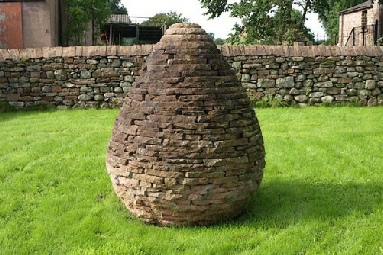
The Story of Bolton -
In ancient times Bolton was written Boelthus, Boeltum, Bovelthus and Botheltum. In the Cumbrian dialect it is pronounced Bowlton and the suggested meaning of the name is enclosure with buildings or the village proper. The village lies about one and a half miles from the A66 in the appropriately named beautiful Eden Valley, four miles from Appleby to the South, and nine miles from Penrith to the north. The Pennines lie to the east with a good view of High Cup Nick on a clear day. The fells are an ever changing scene depending on the weather pattern. To the west can be seen the tops of the Lakeland hills. There is a lively caring community here supported by the village school and nursery, the New Crown Inn , two churches and the Memorial Hall.
How or why the village came to be here is unknown. There is evidence of it being here in medieval times from the 5th to the 15th century, as the archaeological patterns of ridge and furrow ploughing can be seen in several places within the village. The medieval period began before the collapse of the Roman Empire so there could have been a settlement here before the Romans came. Between Crackenthorpe and Kirkby Thore at the side of the A66, an old Roman road, there was a large Roman camp Gallatum and just a short distance further on a Fort called Maidenfold which was perhaps a guard house or watch tower for the camp. There could have been a community arising adjacent to the Fort across the river Eden which was easily reached via islands in the river at Bolton Mill.
The 14th century would have seen Bolton as a village of hovels huddled together around the church, the houses being little more than barns. Travellers in Cumbria in the 17th century described Cumbrian Cottages as consisting of one room built of dry stone walls, long and low and often joined at one end of the farm buildings. The whole range would have been covered in roughly hewn slate from the local quarry and if slate was not available the houses were thatched with heather or rushes. The Manor Records for 1627 gives permission for Willow to be cut with a “”licence from the Bail or Frithmen”. The last house to have its thatch replaced by slate was Greystone House. At the time it was just one story high and was known as Marle Cottage.
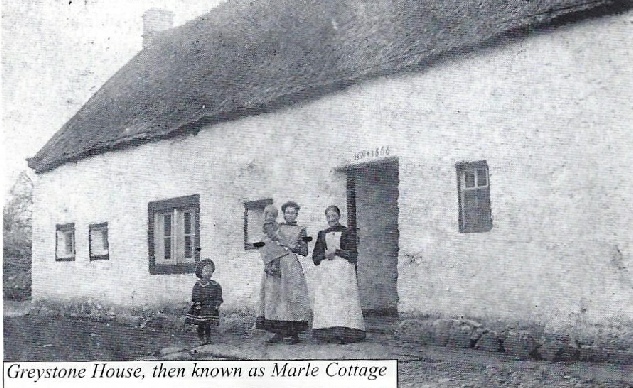
There are several old houses in Bolton but they have been considerably altered since they were first built. Many have features of seventeenth century building; it was in the seventeenth century that the architecture of the houses began to change and a period of rebuilding and alteration took place. When the Black Death started in the south and then swept through the rest of the country it was believed that the plague was carried on a south wind and so whenever possible the houses were built north to south so that a narrow windowless end was set towards the pestilence. The houses running parallel to the main street in Bolton are set almost north to south.
During the rebuilding in the seventeenth century it became the practice to build into the fabric of the house a date stone. There are several date stones surviving in Bolton from the seventeenth and eighteenth centuries and two from the nineteenth century. The oldest known one is that over the door of Glebe House – 1660. Unfortunately the original has been chiseled away to make room for an outside light and the date then painted on either side of the light.
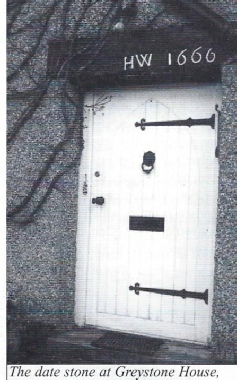
Several modern houses have been built as infill along the village streets and Eden Fold, Grahams Rigg, Whinfell View and North End are all small modern housing estates.
Prior to 1801 there were no accurate figures for the population of England; it was in this year that the government asked that all the people be counted as well as the numbers of acres of land that were in crop. This was the first official census but Westmorland had a census taken in 1787. The reasons for the request to gather this information is unknown and there is no evidence that this it was ever used. The information has been preserved for some parishes and is useful to those tracing their family history. In that year the number of people living in Bolton was 289, in 1851 -
The economy of the village has been founded on agriculture from time immemorial. The Common lands in Bolton were enclosed by an act dated 1808. Altogether 562 acres were enclosed mainly along the village street. Some people exchanged plots for larger ones and vice versa, some sold their rights and others bought several plots. Altogether 17 plots became freehold passing into private hands. In 1828 John Dixon and John Dent were the largest land owners and the third was Robert Hodgeson from Bewley Castle who rented the freehold from the Dean and Chapter of Carlisle. The smallest holding was 4 acres owned by James Atkinson.
The number of farms in the village has decreased steadily since 1851. By this time most of the open field system had been converted into one of small compact farms worked mainly by tenant farmers. If only a small number of acres were owned the farmer would also have had some other occupation such as game keeper, blacksmith, carrier or grocer. By 1881 the number of farms in the village was 22 and this reduced to 20 in 1891. Today there are ten working farms, a disappearing way of life of which few of today’s village children will have memories of.
The history of our village has been compiled and written by Barbara Cotton
INDEX
1. The story of Bolton -
2. All Saints Church
3. The New Crown Inn (The Eden Vale Inn)
4. Bolton Methodist Chapel
5. Bolton School
6. Henry Dent
7. Books
8. Bolton’s War Dad
9. Bewley Castle
10. Crossrigg Hall
11. Eden Grove
All Saints Church Bolton
Grade 1 Listed Building
In the Commonwealth Survey of 1649 Bolton was a chapelry in the parish of Morland and described as belonging to the vicar of Morland with one house for the curate abutting onto the churchyard. It remained in the parish of Morland until 1868 and with Morland church was attached to the priory at Wetheral near Carlisle. According to the Royal Commission for Historical Monuments the church was built in the second half of the 12th century and has been the focus for the community’s religious and social activities throughout the ages.
The Clerks accounts for 1732 record 0 -
All Saints circa 1870
The chapel had no maintenance but the vicar of Morland’s duty was to find a reader there and pay him £7 a year out of his Tithes and Glebe land. There was a high turnover of curates reflecting the poor living. In 1753 the living was augmented by £1000; with £800 from Queen Ann’s Bounty in the years 1754, 1761, and 1785 and £200 was given by the Countess Dowager Gower daughter of the third Earl of Granville. Two estates were purchased with £800 (Glebe Farm now Glebe House and Bewley Farm) the remainder was used to purchase the Scarside estate at Orton.
In 1829 the land owners were patrons to the curacy which was valued at £4 -
The chapel was to be rebuilt in 1829 with £100 from the Society for the Building of New Churches but this does not appear to have happened. Most of what can be seen today is from the restoration in 1848 during the incumbency of the Reverend William Shepherd who was curate from 1833 – 1880. There are still several interesting Norman features remaining.
The earliest work is to be found in the Nave especially the North and South doorways and the western portion, originally part of a tower, with north, south and west walls four feet thick. The eastern wall was possibly removed at some later time, perhaps to enlarge the Nave. The north and south walls continue eastwards and are nearly three feet thick. It is said they were rebuilt in the 16th century on the old lines.
In 1678 £16 was spent on restoration and it was about this time that the bell turret was added, the Chancel walls raised and the roof reconstructed. There was always a necessity to maintain the church and money was paid annually for glazing the windows of the church and in 1762. 0-
Today the view of the church shows a small sand stone building with a bell tower set at the end of an avenue of Yew’s. A walk around the church and churchyard takes us on a journey through many centuries of the church noting past inhabitants of Bolton as we go.
All Saints 2006
In the churchyard to the left of the porch is the stone effigy of a lady upright against the wall. Her hands are clasped across her breast and she is dressed in a long cloak or dress which could be that of 12th century Norman.
Her head appears to be resting on a pillow suggesting that she may once have lain on a tomb which could have been inside the church, although in the churchyard near the east wall of the chancel is a thick stone slab on which the effigy might previously have lain.
Moving further to the left on the southwest corner of the church, on the face of the buttress and scratched into the stone is what some describe as an ancient sundial, said to be used to indicate when services would be held.
These “sun dials” are found on other churches throughout the British Isles, sometimes found inside the porch which is not the best places for a sun dial, so their meaning is unclear. They may be remnants of old religions. Charles Cox notes in the County Churches of Cumberland and Westmorland that these small sundials occur on other churches in the county and are believed to be Saxon dials denoting the existence on the site of a previous Saxon Church.
On the North side of the church and built into the wall is a relief in red sandstone of two knights fighting; its significance is unknown, perhaps it commemorates a tournament or a memorial to a knight fighting the infidels in the crusades. Over the years it is being slowly worn away by the weather and pollution. (There is a replica of the relief inside the church) Beside it is evidence of another relief which is possibly a companion to the Knights now almost completely worn away. It was inscribed:
=Ds LVRREN DE .WERE
DVN:Qs: HoM ES DE .BO
ELTVN: + .II .OMRS:QV
SeAT IF Mtop was stV . R.ESNE
LVRLALYV R:OS
+RAT : O N . RAM
DSLVRHEI
The only part to be translated to date – Sir Lawrence de Vere gives to the men of Bolton……so we may never know what was given to the men of Bolton. Could the two reliefs relate in some way to the Knights Templars ?
The Knights Templars had property at Temple Sowerby a short distance from Bolton sometime during the reign of Edward the second. What there is left of the description of the property they owned there makes reference to a water mill, millpond with eels and with a total income of £7 – 3 – 0d per year. The property is that which we know of as Acorn Bank to-
To the right of the church porch lies a Grade 2 listed tomb that of William Bowness benefactor to the school. His will requests that the rent from land he owned be distributed upon his tombstone to the poor of Bolton by the church wardens on the feast of Saint Thomas the Apostle every year forever. There is also a tablet inside the church on the north wall of the Nave recording the bequest by his will dated February 9th 1709.
Further to the right of the porch are some table top tombs and a Grade 2 listed sun dial erected by the church wardens in 1747 inscribed with CHURCH WATCH and the initials JB and RA (James Bowness and Richard Allen) the pillar stands on a medieval cross-
Stepping into the church through the porch which was added in the 18th century we can see the inner Norman doorway circa late 12th century. The door has an attractive pattern of six petaled rosettes within circles to the left of a figure holding a large hammer shaped object in the right hand and an axe in the left hand. On the other side is a figure which looks as if it is winged and with wide spread legs. The carvings are worn and the moulded bases decayed. To the left resting on a stone seat is the tomb stone of James Hanson parish clerk who died aged 79 in 1721 and his wife Elizabeth. The stone was part of a much bigger memorial attached to the south east church wall outside. It had to be removed because it was slowly pulling the wall down.
Moving further inside the church the font can be seen on the left.
It is not dated but is probably the same date as the cover which is made of oak with the initials TG (Thomas Gibson) and WH (William Hanson) and the date 1687.
To the right of the door fastened to the wall is a wooden poor box with a dated inscription, partly painted out “1634. The pour mans box and churchwardens seat” and the initials IL and RC.
Opposite on the north wall is a former Norman doorway now a window; at one time the Nave ended on a line with this window and we would be stood in the middle of what might have been the west tower. The wall on the far side of the vestry is more than four feet thick and has large buttresses; the staircase leads to the gallery where at one time there might have been a large belfry. Today above the gallery and an arch is the bell tower restored in 1985 to the memory of James Bell. There are two bells cast by W Scott of Wigan in 1693. The church wardens in 1694 “disbursed to Robert Lacklan for carrying the bells 8/-
At the communion steps the windows on the north and south walls are late 12th century but the stained glass in the east window dates only from 1847. There is some very ancient glass in the arched window above the priest’s door and set into the glass is a small shield showing the arms of the Derwentwater family.
Whoever was commissioned to make the shield made the mistake of positioning the cinquefoil in the right hand corner when it should be in the left corner? The de Derwentwater dynasty ended when there was no male heir and in 1417 the estates passed into the Radclyffe family when the heiress of John de Derwentwater, Elizabeth married Sir Nicholas Radclyffe, Sheriff of Cumberland. The Radclyffes originated from Radclyffe Tower in Lancashire before the 12th century and were of equal nobility to the de Derwentwaters and when they took over as Lord of the Manor retained the name Derwentwater. The ancestors of Sir John Derwentwater held the manor from the time of King John and a chantry was founded at Bolton by his family in 1326 to sing masses for their souls.
The very low window on the south side is a leper window to give those parishioners, suffering from leprosy and standing in the churchyard a view of the priest as he took the service. The other window in the south wall shows the Risen Lord and is dedicated to the memory of Mary Graham of Eden Grove in 1908.
The oak screen in the chancel is thought to date from the restoration of the church in 1848. The chest to the right of the screen is made of large slabs of wood 2 inches thick circa 17th century. It may have held all the parish records in ancient times. In 1678 it is recorded that there were 34 pews and 125 seats. The pews would have been occupied by the Yeomen of the village and the men would have sat on the one side of the church and the women on the other. The remaining five pews were in the chancel and were removed in about 1927; the wood being used to make the choir stalls and two reading desks. Electric lights were fitted in place of oil lamps in 1934. The Monumental Survey of 1837 records the church pewter plate as probably of 18th century amongst which is a mug 6 inches high, a flagon 7 inches marked on the lid and inscribed The Gift of George Harrison of Whitfield Brow To The Inhabitants of Bolton For the Church.
In more recent times many members of the village community have been involved in making their own contributions to the church, most notably that of a programme of fund raising begun in 2006 to meet the costs of extensive restoration. The building was found to be in urgent need of high level structural repairs to both the roof and walls to prevent the ingress of water, the partial collapse of walls and improvement of ventilation within the building. The restoration was begun in 2008 with the majority of the most urgent repairs (phase one) being completed by July of that year.
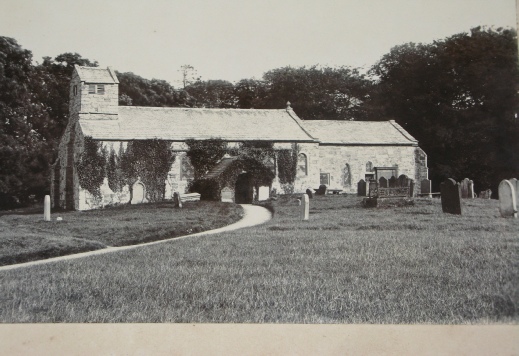
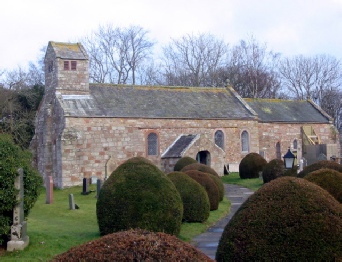
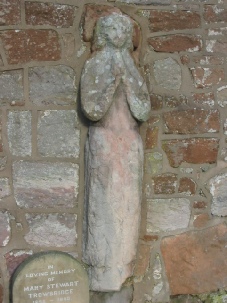
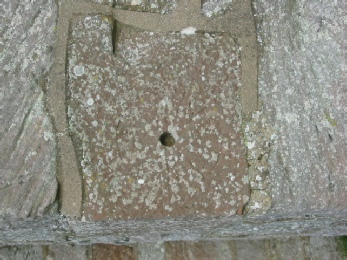
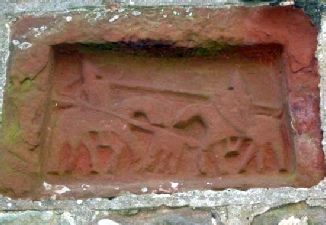
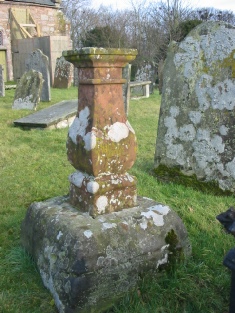
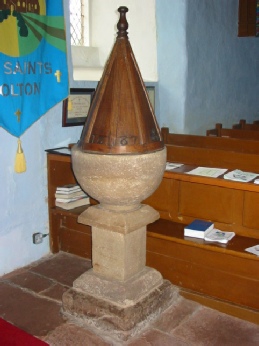
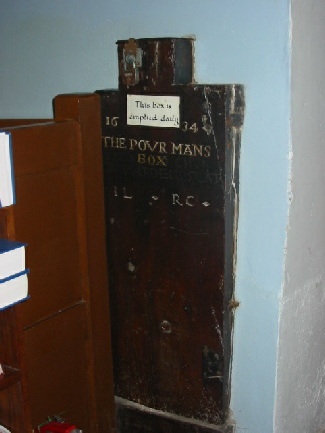
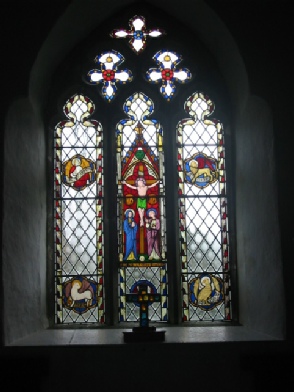
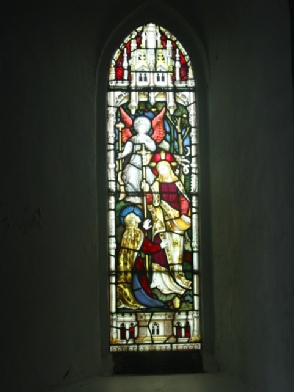
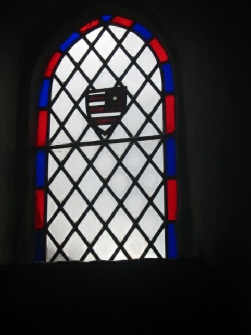
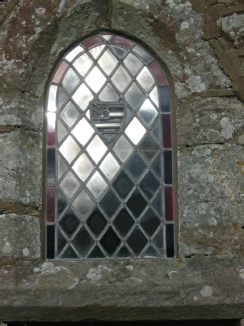
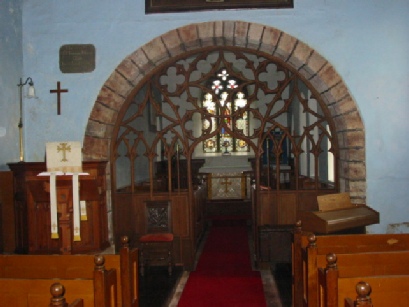
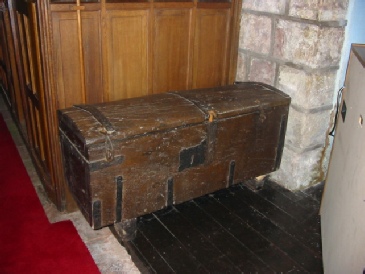
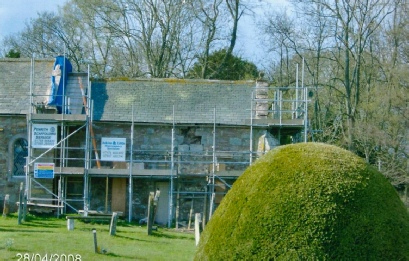
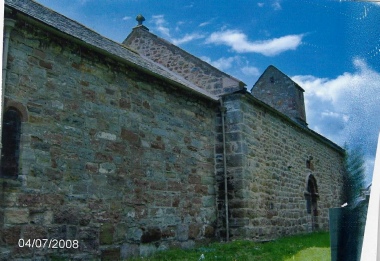
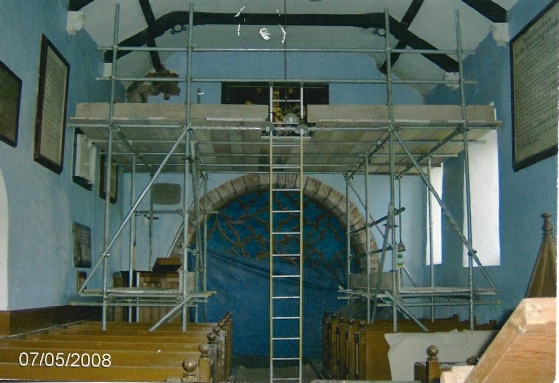
The New Crown Inn
Bolton’s village inn is shown on the 1861 ordnance survey map as the Malt Shovel. It is not known how old the building is or how long it served the purpose of being an inn. A few years ago when some refurbishment was being carried out in the building the publican found a cache of coins dated in the 1700s above a door lintel. More research may show that it existed much earlier than that because pubs, inns and alehouses are known to have existed since the 10th century providing basic food and accommodation for the traveller. The inn stands about 100yds east of the cross roads and almost opposite All Saints church; close enough to the church to confess your sins and then visit the ale house!
In the 1851 census Joseph Jennings is listed as a maltster and victualler but there is no indication of where he carried out his business. There is no other occupation mentioned for him so his income could have been solely derived from his making and selling of beer and he could have been the proprietor of the Malt Shovel. Mary Nicholson who was a widow was a victualler and carried on her business at Wayside. Ten years earlier in the 1841 census Mary was a publican and living with her husband John a school master. At Bolton Lane Ends lived John Walker who was a farmer of 40acres and a keeper of a beer shop. He would have been restricted to the sale of beer, porter and cider and he would have had to pay two guineas for a licence to do so.
Ale houses started to go out of fashion in the 1830s as the larger brewers started to construct purpose built houses for the sale of beer and spirits.
By 1881 Thomas Hodgeson was inn keeper of the Malt Shovel and also a farmer. William Moore kept the New Crown Inn which was opposite the Malt Shovel. To-
In 1891 at the New Crown Inn John Furness is the licensed Victualler. Sometime prior to this the New Crown Inn was closed and part of the name was transferred, with a new proprietor to replace the name. The Malt Shovel became the New Crown Hotel. Sometime later J. H Wilson took over as publican and later gained the notoriety of being the oldest serving publican in Britain.
The Inn was not only a place to meet socially or to stay when travelling, trading would take place between travelling sales men and there would be entertainment. The Malt shovel also served another very important function. It had a meeting room where the Manor Court was held.
Bolton has served several lords of the manor throughout the ages. The Manor was governed by a Manor Court in which a meeting of tenants was convened and presided over by the Lord of the Manor or his steward. The court considered both judicial and administrative matters such as the transfer of property. All tenants were obliged to attend the Manor court and were eligible for election as jurors. Non-
An important meeting convened at the Malt Shovel was one to oversee the enclosure of Common land by an act dated 1808. The principal of the closure legislation was that the Lord and commoners would each receive an allocation of land for the legal withdrawal of their former right. Once it was determined that the principal land owners agreed to and were committed to the enclosure a surveyor and a valuer were appointed by the parish to assist the commissioners in determining the enclosure awards in compact holdings which was equivalent to the combined portions of common land held by a particular claimant. The Commissioners for Bolton were Jo Fryer and Thomas Harrison and the surveyor was John Nicholson from the Malt Shovel ( Eden Vale Inn today) Following the survey and valuation a public consultation was held and the land re allocated.
The cost of administering the system plus hedging and ditching, building of walls and planting of hedges fell on the recipients of the awards. Altogether 562 acres were enclosed mainly along the village street. Observe the 16th/17th century buildings remaining in the village that stand well back from the road; all the land between would have been common land. Some people exchanged small plots for larger ones and vice versa. Some sold their rights and others bought several plots. Altogether 17 plots became freehold passing into private hands.
Mr Max Robinson’s parents were born in Bolton and as children Max and his brother Dent visited Bolton every year in August to stay with family members in the village. Dent has returned every year since, up to the present day at the age of 104. In correspondence with Max he describes how as a lad he watched the sign for the Crown Hotel being painted by an artist who later became famous for painting “The Rower” which made a sensation at the R.A. in 1932. The painter was Lancelot Glasson and the Glasson family owned a brewery in Penrith. Lancelot had lost a leg in the battle of the Somme and he only took up art after the end of the war in which he won the M.C. while serving in the Royal Fusiliers. The New Crown Hotel was a Glasson House.
Max does not remember the sign being painted in situ but is sure it was but says the main work could have been done on the ground and the finishing touches added from the top of the ladder. He can remember very clearly the artist climbing the ladder carrying his Mahl-
Some years later Max was visiting an art gallery and saw a most beautiful picture painted by the same Glasson. It was called “The Rower” and was the study of a nude undressing after an outing on the river. “I don’t suppose my parents would have been particularly enthusiastic about my interest, but it was a most attractive work of art”.
Mr Ellwood was post master at Bolton for over fifty years and he and Mr Glasson senior spent the whole day discussing cricket.
Max’s Aunt Elizabeth Dent remembered the sign being painted by the famous artist Captain Glasson who had an artificial leg. Later the same artist took his easel up the North End and set it up outside what was then Dodd’s Farm and painted a landscape. Miss Dent also remembered the sign being unveiled by the then vicar of Bolton the Reverend Carmichael. Although he was a teetotaller he was a man of very wide interests and no doubt an inn sign painted by an outstanding artist was such an unusual event it appealed to his sense of the historic.
At the beginning of 2016 a new proprietor took over the running of the pub. As far as is known it started life as the Malt Shovel, became the New Crown Hotel, then the Eden Vale Inn and is now the The New Crown Inn
Bolton Methodist Chapel
The Methodist Chapel is situated on the road leading to Cliburn. It is one of the oldest Methodist Chapels in Westmorland. On the 10th of June 1820 a legal agreement was made between William Dent of Bolton, Yeomen and John Dent and several other persons:
Witnesses that in consideration of 10/-
There had been a Methodist Chapel at Kirkby Thore since 1798 but it was not until 1803 that Methodism was introduced into Bolton and by December of that year Bolton was listed in the circuit records as – one of the fifteen societies and as having paid a quarterage of 4/6d
The Dent family had always had close links with the parish church. Henry Dent was a churchwarden three times by 1800 and again in 1812.The family lived in the middle of the village At Gilflosh meaning valley swamp; known today as Elm house. Henry Dent was head of the household and he and his wife had six children. The family gave the Methodists a warm welcome and opened their house to the Methodist preachers. Gilflosh continued to be used for preaching until 1818 by which time the Brough Wesleyan Methodist circuit stretched from Renwick to Kirkby Stephen and from Hilton to Orton. Every Sunday a service was held in Bolton at 7pm.
It was through the effort and commitment of John Dent and other members of his family that Bolton had its own chapel in 1818 when John’s brother gave the site, the garden at Gilflosh and £30 towards the cost of building the Chapel, equal to about £1000 today.
A frequent visitor to the Chapel would have been Hodgson Casson a Wesleyan Minister born in Workington. In 1819 he came to serve in the newly amalgamated Brough and Penrith Circuit. He married Mary Dent John’s sister who in his autobiography described her
as -
Sadly the marriage was short lived as Mary died in 1823. Casson had a two year ministry in the area including a camp meeting that was held in a large field near to Bolton. A long cart served as a platform with Casson as the principal speaker.
In 1833 a Sunday school was started in the Chapel with John Dent as Superintendent. In 1861 the average attendance was 45 in the morning and 53 in the afternoon. Band of Hope meetings were also held in the Chapel. The Band of Hope was first proposed by Jabez Tunnicliffe a Baptist Minister from Leeds. The idea came about after he witnessed the death of a young man whose death was caused by alcohol. The Band of Hope became an advocate for the total abstinence from alcohol and in 1847 with other Temperance workers they founded an objective to teach children the importance and principles of teetotalism. The Band of Hope soon became a national organisation and meetings were held in churches throughout the country.
Methodism in Bolton was much affected by National events. On the death of John Wesley the Methodist Conference of 100 Methodist Ministers assumed his great power, but it was felt that the conference never allowed the voice of the layman to be heard and in 1827 a decision of a district meeting was overturned by conference and many members left the Wesleyan church. There was more discontent voiced when conference proposed a training school for ministers with Jabez Bunting as principal.
Reform was demanded when over a hundred delegates gathered in Sheffield in July 1835 all having some grievance against the conference party of the Wesleyan Church. John Dent went to represent those demanding reform in the Appleby Circuit but conference refused to receive the delegates. The delegates were determined to continue with their association and broke away from the parent body, calling themselves the Wesleyan Methodist Association holding their first annual assembly in Manchester in August 1836. Wesleyan Association Circuits were formed and a new branch of Methodism came into being. All the Methodists at Bolton withdrew from the Wesleyan Church.
At this time a great difficulty arose because Bolton’s Methodist Chapel belonged to the Wesleyans and the new Methodists were not allowed to use it for their services. Gilflosh was opened up once more to be used for services and for four years the chapel stood unused because the Wesleyans stood firm in their refusal to allow the new Methodists to use the Chapel. This must have been infuriating to the Dent family because they had provided the land and monies for the Chapel to be built in the first place. It was not until 1840 when the Chapel was falling into disrepair that the Wesleyans accepted the offer of payment of the cost of the building beyond the original subscriptions. From then on Methodism was able to progress in the village.
In 1926 a major renovation took place; the building was heightened and the interior redesigned and refurbished. Thomas Bert Irving from Morland did the stone work and Joseph Dent of Warcop the wood work. The stained glass window was fitted at this time and the chapel was reopened by Mrs G J Williams the Mayoress of Appleby. Although the congregation is small it still meets in this little chapel every week.
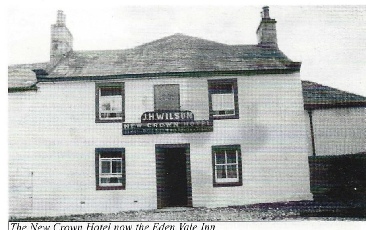
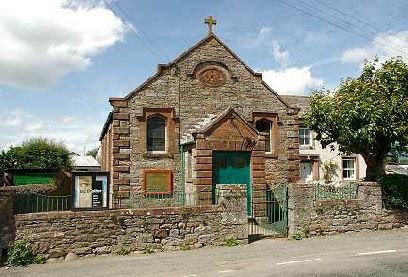
Bolton School
Bolton School at the turn of the 20th century. Today the school is a private residence.
The church records show that at least two of the curates of Bolton were licenced to teach school; Nathanial Beck in 1663 and John Breeks in 1693. Robert Nelson taught school in the years 1671-
There may have been a separate school but it is more likely that the classes were held in the curate’s house which abutted the church yard. In the smaller endowed schools and chapelry schools it was frequently the curates who were in charge and not all were well educated men. Good school masters and clever scholars could move to the better endowed establishments in other parts of Westmorland or further afield.
The key to the growth of education in the area was through the five major grammar schools acquiring close relationships with Cambridge and Oxford for the establishment of scholarships and exhibitions. Some of those Westmorland people who became successful in their chosen field would then take an interest in their old school and county.
There is evidence that a free endowed school has existed in Bolton since 1731. It may have stood on the track leading to Mr Ewbank’s land between the poplars and the new houses at Hillcrest.
Eventually a school was built by subscription and endowed with several benefactions to pay for the costs. James Hanson curate of Bolton left 40/-
I give and bequeath to the Reverend ffrancis Thompson of Brough & the said Thomas Hanson the sum of forty pounds of like current money to purchase a Temporall or Reall Estate of Inheritance the yearly Rent or profit thereof to be employed for the teaching Schooling or Instructing off four or more of the poorest of the Children of the Inhabitants in Bolton aforesed.
His widow gave a further 10/-
Thomas Hanson’s tomb stone was once fixed to the south wall of the church but now stands inside the church porch. A verse from Hanson’s epitaph reads:-
In memory of James Hanson
Who to this town poor out of his store
His last will makes relation
Ten pounds he gave and forty more
For children’s education
This money was initially used to buy land which was later sold for 100/-
Williams’s son had been educated at Bolton and Appleby Grammar School and became a Major General in the British Army. Dr Michael Richardson a clergyman in Berkshire gave 50/-
A new school was built on the old site in 1856 (where Tarka House stands today) at a cost of £500 paid for by Mr Richard Tinkler of Eden Grove. There was no accommodation for the master but later Glynn House became available for the head teacher.
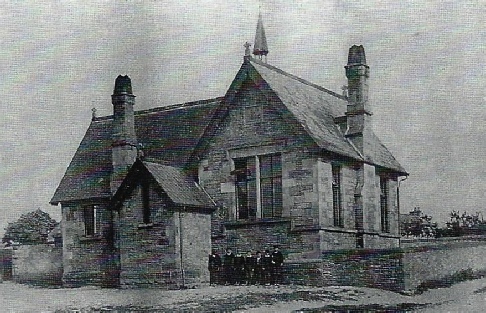
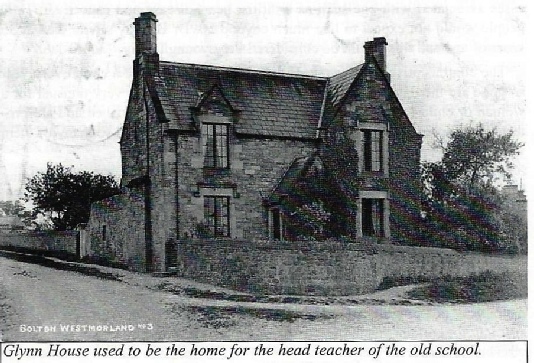
Henry Dent
An intriguing inscription on a memorial stone in Bolton church yard led Cathy Smith to investigate the life of farmer’s son Henry Dent who died in Van Diemen’s Land in January 1854, aged 27. How and why had he travelled so far from home? Using many of Henry’s own words from his poems and letters, Cathy has reconstructed Henry’s brief but adventurous life.
The following extract is taken from Cathy’s book
Published by AuthorHouse
Available to purchase via
www.authorhouse.co.uk,
www.amazon.co.uk
Copyright: 2010 Cathy Smith
Email: cathys55@hotmail.com
The Adventures of Henry Dent
Farmer, Poet, Gold Digger, Sawyer
By Cathy Smith
“The First Aspirations of Thought written for Amusement and doomed to the flames.” These words were written by 20 year old farmer’s son Henry Dent of Bolton in Westmorland, England, in the year 1847 on the first page of a notebook in which he painstakingly wrote out poems of his own composing. Little did he know that only a few years later it would be he who perished in flames, whilst the notebook survived in an attic for over a hundred years.
Henry’s death is commemorated by a tombstone stating that he died at Flight’s Bay, Van Diemen’s Land on January 11th 1854, aged 27 years, and was interred at Franklin. How did he come to die so far away from home? Thanks to members of his family, many of his letters home have been preserved, and from these we can piece together his short but adventurous life.
In 1852 Henry decided to emigrate to Australia to dig for gold. He was to sail from Liverpool on the SS Serampore, and writing before the voyage got under way, he was full of praise for onboard arrangements:
“We are very comfortably situated and are just getting arranged into messes of a dozen each to sit down to table together. We have a messman at the head of each table who deals out an equal quantity of what is laid before us. We have about a dozen biscuits brought to the table of the size of a good bason top and half an inch thick. Cans of coffee are brought and the allowance of butter. He with a table knife places the butter upon the biscuit and the parties spread it themselves. Two cups of coffee is the allowance. We don’t allow any to leave table till all have done and so we avoid confusion by another stepping in. By this system the messman and his party all leave table together. Yesterday we dined on salt beef, soup and half a biscuit each. On Saturday we had fresh beef to dinner and there was more than required. We breakfast at 8 in the morning, dine at 12.30 and tea about 6. “
Conditions deteriorated as the voyage progressed, but the ship arrived in Port Philip without any passengers falling sick and Henry and his companion Henry Richardson found lodgings in Lonsdale Street, Melbourne before setting off to the ‘diggings’. With help from a family friend, Mr Palmer of Kyneton, they travelled to Fryers Creek, Mount Alexander.
In a letter written in December, Henry describes their neighbours:
“We are in good society, comparatively speaking and surrounded by kind neighbours. Our nearest neighbour is a gentleman from Northumberland of the name of Archibald who left England in 1841 and has now a sheep station at Wimmera 200 miles up the country. His sons are now up shearing the sheep. They are first rate neighbours and I sometimes go and hold a yarn with him. Another neighbouring tent is inhabited by a family of respectable persons named Adcock. They left Cumberland about 2 years ago and have been keeping a grocer’s shop in Melbourne till last Summer. They came up to the diggings and have done pretty well. Another family of Watsons reside in our row who left Cumberland a month or two before I left home. Then there is Mr Palmer’s tent containing Robert, John and William together with two of the Shearmans of Orton. The old gentleman Joseph Shearman was taken by the dysentery and was obliged to be taken down to Kyneton last week. We heard yesterday that he is no better and his two sons are off to see him. Two or three of the Palmers generally stay at the diggings about three months each end of the year.”
The life of a digger was very hard. First of all he had to purchase from the Commissioner a licence “to dig, search for and remove gold from the Crown Lands of Victoria”. This cost 30 shillings a month but without it, one could be fined a considerable amount. It entitled the holder to a plot measuring just 8ft x 8ft in which he might dig down anything up to about 50 or 60 feet in the search for gold. Labour such as this required considerable physical strength, and some men soon gave up. If they had heard tales of the early days when gold dust could be found in the roots of the grass or when nuggets could be found lying in the beds of the streams, this hard labour would have been even harder to bear.
“Many who are well qualified to handle a pick and shovel have been allured from their writing desk or counter at home by the hope of soon picking up on the diggings what will make them independent of work for the whole of their after life. Some of these are discouraged at first sight of the diggings and dare not face the labour requisite to obtain the gold. Others begin to dig and I have sometimes been amused to see them making their first efforts. They use the pick something like a young bird it’s wings – very feebly. Some of these after sinking a few blank holes throw down the pick in despair and betake themselves to work for which they are more adapted. Others return to England, very likely with a bad report of the country when in fact the country is not to blame, but they are not adapted to its wants. “
Fortunately when in difficulty Henry could rely on the hospitality offered by Mr Palmer who was apparently so generous that
“Some indeed he has killed with kindness or in other words he has given them the requirements of Nature and entertainments of his house, refusing to receive remunerations till they sometimes passed his house without calling, when they would have been glad to have lodgings with him, if he would make a charge for it or receive a voluntary gift, but knowing that he has many visitors and that if they called he would receive no pay, they have chosen to travel on a little further. The old man seems to be disposed to do a good turn to any of his old countrymen or acquaintances and he is now in circumstances that he can well afford it. When we came up, the carriage of luggage was extremely high. Mr Palmer being gone to town I wrote him a note requesting him to bring up a chest containing some clothes of Mr Richardson’s and my own. In case he should be too hard loaden I requested him to get it to some drayman in whom he had confidence and I would pay him on his return. On being down since his return I offered to pay the carriage. “Not one farthing” said he. “If I charged you anything for a job like that I would never forgive myself while I live. My family received many favours from your father in past times and I think of such things.” He then told me that until I got settled I was to make his house my home and I should always be welcome. If at the diggings or anywhere else in the colony I should lose my health I was to make the best of time in getting to his house and they would do all for me that laid in their power.”
No doubt this assurance as to his physical welfare would be of great comfort to Henry’s mother at home in Bolton, but Henry is also at pains to reassure his Methodist father on the question of his spiritual health. He seeks to justify his decision to seek gold, as many religious people were of the view that this was an “unpardonable sin”. He thinks such people would lose their prejudices if only they could visit the diggings, where they would find “men of all classes of society and of nearly all trades and professions from the weaver who has left his loom to the lawyer who has quitted his wig. They’ll find men of reputable character and sterling principle who have taken up the digger’s pick and shovel and are anxious to make their fortune and “gather geese”
“Not for to hide it under a hedge
Or for a State attendant
But for the glorious privilege
Of being independent.”
And some I have no doubt from even higher motives than this, that they may be useful to their day and generation in dispelling darkness, ignorance and crime from the face of society both in their adopted country and the more privileged but still poor man’s face-
“Since I commenced we have been working the same hole and it yields us perhaps an ounce and a half of gold per day between us and so long as it will yield an ounce a day we will continue to work it, but if it falls under we will look out for another place.” However, when Henry Richardson contracted dysentery, the friends decided to leave Fryers Creek and try another enterprise. Although there was money to be made from farming, Henry was not tempted to buy a farm, although by this time he had a decent ‘competency’ of £200 from his gold. He chose to go over to Van Diemen’s Land, writing to his mother in March 1853: “I had two or three motives in coming here. One was for a little recreation; another to see the place and ascertain how the prisoners were treated, who have been sent from England for their country’s good, and third and last to trade a little in Van Demonian produce.”
On the first point, he says the island is “a beautiful place, diversified with hills and vallies, woods, rivers and plains and is a most salubrious climate. The Derwent is the finest river I ever saw and a splendid harbour at Hobart Town into which the largest vessel in the world might sail with ease, the river being 2 or 3 miles wide. “ The green hills rising to the peak of Mount Wellington which towers over the little harbour town, the blue of the river and the invigorating breezes blowing from the Southern Ocean must have been quite a tonic after the scorching dry conditions at the diggings during the mainland Summer. This Autumn weather reminded Henry of home most poignantly and he wrote six letters home between March and November that year.
Henry argues that it is not the fault of Van Diemen’s Land that it is perceived to be a jail, “.. it is not her fault. She must thank the virtuous and humane England for that. And though I never had any ambition to go to jail while at home, when I got out into Australia I confess I thought I should like to go to jail, of course not on the penetensiary but to see England’s great prison and observe the treatment of the unfortunate inmates. Did I say unfortunates – there are some who have had the sentence of “hard labour” passed upon them “for the period of their natural life” who are now rolling in luxury, driving their carriage and have all that the heart could wish. Verily I believe they would have been more punished by being set at liberty at home where a man must work hard for all he gets.”
Trading took Henry out of Hobart and into the interior of the island. He describes to his mother a particularly rough journey to a place 35 miles from Hobart, when he was grateful to a family called Weeding who farmed near Greenponds.
“One gloomy morning I mounted the coach at 6 o’clock to go into their neighbourhood. We had not travelled far when the rain began to fall very heavily and I felt the difference of a stage coach to a railway carriage in the exposure to the inclemency of the weather. When we arrived at Greenponds I had about 4 or 5 miles to travel over the steep hills and through rough and long grass and what rendered the case worse I nearly lost the heel of one of my boots. However, on arriving at the Hunting Ground Mrs Weeding gave me a hearty welcome though I could by no means be a pleasant guest.”
The friends then saw an opportunity to start a timber cutting business on the Huon River, as timber products were in great demand on the mainland. On September 11th Henry wrote to his mother about this new location:
“Mr Richardson and I are at present living in a hut on the banks of the River Huon at Flights Bay where the river may be said to merge into an arm of the sea for vessels of almost any tonnage might with perfect safety come up thus far, in full sail. This morning the reflected beams of the sun make a part of this bay appear like a sheet of glass. Another part has a gentle curl playing up it with the morning breeze. Here and there its surface as a mirror reflects the clouds and the surrounding woodland hills. This as you are aware, is a Winter’s morning, yet all around is clad in green. The brushwood assumes a thousand different forms. Some of the shrubs would grace a gentleman’s pleasure ground, but although they are strowed about in apparent confusion, yet to me they have a charm of which they would be deprived were they placed in that artificial capacity. They have here all that luxuriousness with which a bounteous Nature can adorn them. The other day Nature seemed convulsed – one squall of wind after another howled through the forest, the Bay was all emotion, the rain fell in torrents and the peals of distant thunder were frequent. Now all is calm, serene and beautiful, and the little birds, though they cannot sing like the thrush, the linnet or the nightingale are manifesting their joy in the best and sweetest strains with which Nature has endowed them.” He describes the tall trees “whose aspiring trunks shoot up to a height seldom thought of and more seldom realised in England.”
However this idyll was not to last, and it was Henry Richardson who described the fateful day – January 11th 1854:
“At 1 o’clock, the day being warm with a hot wind, we had been bathing in the bay. We then had dinner. About 3 o’clock we commenced to saw. In about 10 minutes after this the wind began to blow a complete hurricane. The fire had been burning on the ranges for a day or two. It now began to approach us with the most alarming rapidity; so soon as we became conscious of our danger we threw a few pieces of timber from the pit which was likely to ignite, and ran into the hut, having thrown out a few articles, the whole of which did not occupy more than two or three minutes. He told me to run with the bedding to the beach and try to save it. I immediately did as required and in less than half a minute deposited it there. I then attempted to return, as he had not followed me as I expected, but found it impossible to do so as the fire was already across the path by which I had come. So soon as I durst venture for the fire and smoke, though still at imminent danger from falling trees and branches, I did so, when I was horror struck to find him lying in the middle of a cart road, not having got more than 50 yards from the hut. He must have been choked by the smoke. The smoke from the underwood which is green and full of gas is so strong that anyone breathing it is almost immediately suffocated.”
Henry’s body was taken to the town of Franklin, about 12 miles away, for an inquest and burial. The page recording his death states as cause of death ‘Burnt to death by Bush Fire’ and there are five similar entries on the same page, two other ‘Labourers’, one ‘Labourer’s wife’ and two children.
It would have been June or July 1854 before news of this terrible disaster reached Bolton. How would parents feel to know that for the last six months when they thought that their son was happy and prospering in the new country, he had in fact been dead and buried? What to do, how to tell your friends and neighbours? How to remember your firstborn son? At some point the Dents caused a memorial stone to be erected in the churchyard, so that there was at least a place where his memory could be honoured. A hundred and fifty years later its intriguing inscription and the careful preservation of Henry’s letters has led to the retelling of his fascinating story.
Copyright: 2010 Cathy Smith
Email: cathys55@hotmail.com
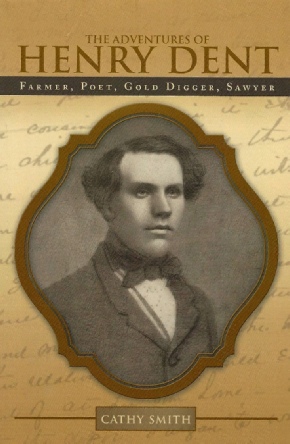
Bolton’s Roll of Honour
World War One
Sydney Bennett died 25th March 1917 aged 29
William Clark died 16th August 1917 aged 20
John Dixon died 31st July 1917 aged 47
John Lambert died 10th April 1918 aged 27
Arthur Savage died 6th October 1917 aged 21
Matthew Savage died 7th June 1917 aged 37
John Stephenson died 15th June 1916 aged 23
Robert Henry Wilson died 4th October 1918 aged 20
World War Two
James Hector Oliver died 6th June 1940 aged 27
Donald Robinson died 11th June 1944 aged 20
The record for each of the ten Bolton men on the Roll of Honour together with their memorial details, compiled and written by Derick Cotton can be viewed by selecting the appropriate entry below
RECORDS
MEMORIALS
Books
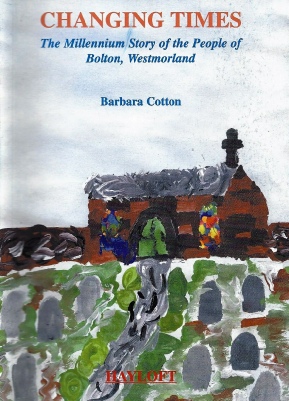
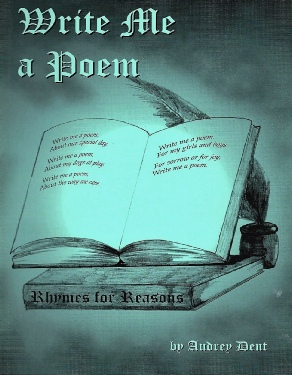
This book is the millennium story of the village of Bolton. It covers aspects of village life, past and present, with detailed histories of some of the village houses and people and is illustrated with 160 photographs of village people and places.
Price £6 (reduced from £12.50)
All profits to Bolton Memorial Hall
Contact BarbaraCotton@Outlook.com
Audrey Dent (nee Bellas) spent her childhood in Bolton. Audrey has always loved poetry and used to scribble odd little verses to amuse her daughters when they were small. Seeds had been planted and relatives and friends started asking for poems to be written for various reasons and Audrey enjoyed trying to oblige. Therefore most of the poems in this book are very personal, nonetheless, it is hoped that they can be enjoyed by a wider readership.
Price £3.50 (reduced from £5.50)
Contact BarbaraCotton@Outlook.com
In 1865 the school was described as a mixed elementary school. There was one master receiving 13/-
The school was not connected to any religious denomination but prayers were said before and after school and a Sunday school was held there every Sunday. The village green was the playground. The school was open for 46 weeks of the year and the children spent five hours and forty five minutes a day in school with two breaks for recreation. The children were taught English, writing and mathematics and one of the benefactors had asked that Latin also be taught.
The school was governed by the master and three yeomen of Bolton and when any vacancies occurred they were filled by persons voted in by the remaining governors. In 1867 the trustees were; the Reverend W Shepherd, Colonel Rigg, J Dent yeoman, M Savage Yeoman, T Simpson Yeoman and the master was W Jennings.
The schools were inspected just as our schools are today and the following account is the report the school inspector Mr. D. C. Richardson provided in the late 1860’s:
On account of the 13/-
The master has been at the school two years and is still a very young man. It is difficult to secure the services of a practical or highly qualified teacher on so small a remuneration as is here offered but it would seem to require neither long experience nor superior attainments to raise the average proficiency of these children.
Mr Richardson’s report tells us something about attitudes to education at the time. In the earlier Victorian years the age that children in the country started school depended on the circumstances and attitude of their parents. If the mother was employed outside the home or if she had other younger children school attendance might begin as young as two years of age. The teachers would accept these babies because they realised that if they didn’t the older ones would be kept at home to look after them.
Much of the absenteeism was not only caused by children being kept at home to look after younger siblings but by children being sent to work in the fields to mind sheep or pick stones and especially at such times as hay making. Until fees were abolished in 1891 many children would have been forced to stay at home because of the lack of money. The fees may seem very small; one or two pence a week but this represented a major outlay especially if there were several children of school age. If the head of the family, usually the father was unemployed or on short time this would also mean there was no spare cash for schooling. Some children might play truant and who would not be tempted on a beautiful spring or summers day in such a lovely village as Bolton?
Boys of Bolton School August1898.
Back row from left to right
Ernest Wilson, Fred Brunskill, Joe Longmire,Fred Slack, William Milner, Robb Nicholson, Tom Wooff, J Parkin,Jonathan Nicholson, Willie Elwood.
2nd row left to right; Harry Slack ,Tom Dixon, Frank Slack, Jos Hugill, Jack Robinson, Jack Lambert, Harry Graham, Tom Hugill, ? Albert Woof, Robert Dixon.
Front row left to right; Tom Richardson, Charlie Woof, Willie Hugill, Ramsey Chester, Isaac Tomlinson, Harry Hullock, ? Hugill, Harry Bowson, Stanley Holmes, John Hugill.
Girl Pupils of Bolton School August 23rd 1898 with Miss Jane Jennings Pupil Teacher.
Five Girls were absent on the day the photograph was taken.
Unfortunately no names are given for the girls.
Was Mr Richardson showing his own attitude towards female education when he describes the girl’s ability to write a very easy passage from dictation? Females were discriminated in education well into the mid 1950’s. He does say how difficult it is to attract good teachers on such a small salary but gives the impression the master was not very able and could try harder!
Mrs Maisie Parkin came to modern day Bolton School as head teacher in 1957 and stayed for 27 years. The first six years of her appointment were spent in the old school with Mrs Waiting as her assistant. Space in the old school was at a premium and many old pupils will recall having to walk to the old corrugated church hall for school dinners. School plays also had to be performed there.
The school today stands on a new site and was opened in the 1960’s by the chairman of the North Westmorland Rural Council, Mr J. Millray. It was built at a cost of £17,000 and was designed by the county architect Mr W. R. Wark to the latest specifications of the time. The three main rooms could be made into one by a removable partition.
In 2000 the school had 38 pupils; 14boys and 23 girls their ages ranging from 4 – 11 years. Vanessa Richards was the head teacher assisted by two other teachers. The school had an infant and junior playground and a sports field. A varied curriculum offered a range of extra-

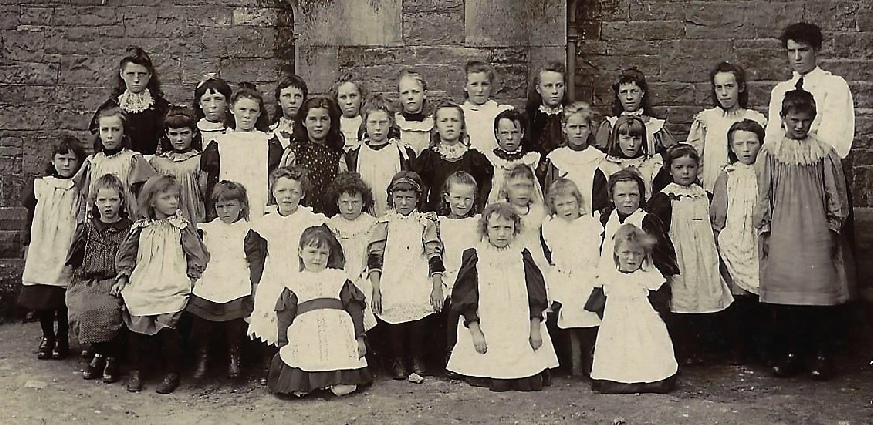
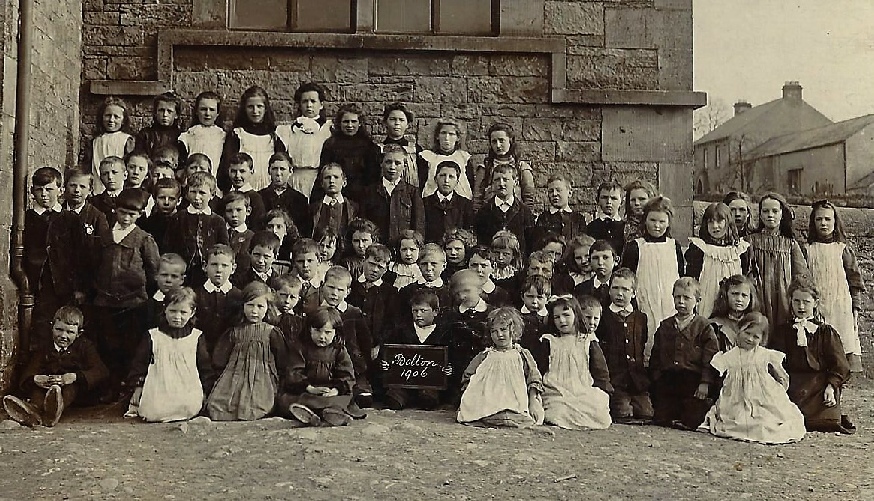
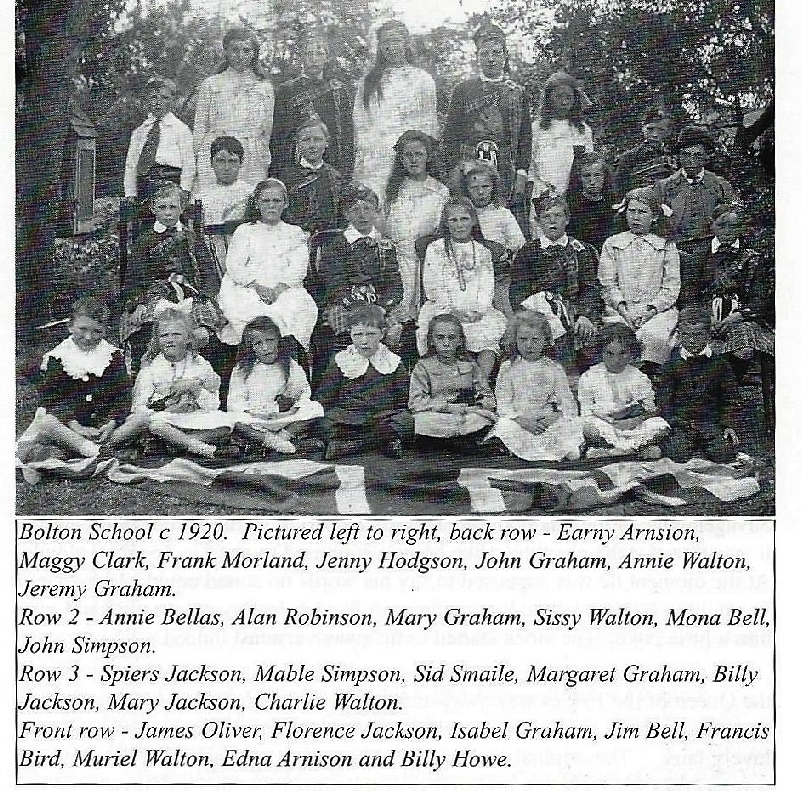
Bewley Castle
South of the village of Bolton lie the ruins of Bewley Castle situated on a tributary of the river Eden known as Sweet Milk Sike. Travelling from Bolton to Colby you would not know it was there, as it lies down a long track unseen in a green hollow to the left of Sweet Milk Sike Bridge.
The survey of Historical Monuments of 1937 describes it as being formerly three stories high with walls of rubble and ashlar. What remains of the castle dates mainly from the 14th century. Originally in the 13th century the site was known as Fithnenin but later became known as Beaulieu.
The Castle at Fithnenin, the riverside pasture was granted by Uethred de Botelton in 1170to the church at Carlisle. In 1186 after the death of the second bishop Bernard the diocese remained vacant for 32 years. During this time the Canons appointed their own bishop and swore allegiance to the Scots King. This annoyed King Henry 11 and he consulted the Pope, who gave orders for the Canons to be expelled and Hugh Abbot of Beaulieu in the New Forest was appointed as Bishop of Carlisle.
The castle was given to Hugh who gave it the name Beaulieu after his previous home in the New Forest .The name is a French form of the Latin bellus locus, meaning beautiful place.
The original castle was built in 1325 and in 1402 Bishop Strickland restored the house, the chapel and the lords chamber. In 1598the castle was owned by Sir Richard Musgrave and this was the time that the incident occurred that is recounted in the Robbers of Bewley, a well-
Later the estate is repossessed at the restoration of the monarchy and King Charles 11 is restored to the throne.
1678 -
In the late 1700’s Edward Jackson curate for All Saints Bolton wrote to the vestry meeting complaining that the correct amount of tithes had not been submitted by Bewley Castle “as they generally apply to have the rate made out the moment they want to collect it , so that no time is allowed to consider of its curacy when this is done. I have no doubt that everything will be settled amicably and friendly”.
New Bewely is another residence that can be seen on the road side by the track to Bewely Castle. The dwelling was built from stone from the castle and over one of the doors on a sandstone lintel is a coat of arms of the Clifford’s impaling Vipont. It is of note that the St Anne’s hospital alms-
There are a number of shields set in panels in the wall faces one showing the Vipont arms impaling Bewley.
In the1991 census there is a new residence listed, New Bewley Cottage as well as the Castle and New Bewley. All the residences have been modernised to a high standard for modern living.
Crossrigg Hall
Crossrigg Hall is situated on the road from Bolton to Cliburn in the parish of Bolton. It is a Grade 2 listed building the original dating from the 1700s and there may have been a building on the site much earlier than this. In the early 1700’s Nicholas Temple a wine and brandy merchant from Fleet Street owned the estate.
The 1787 census for Westmorland lists a Nicholas Temple living at the Hall with his wife, children Robert and John and a servant Ann Robinson. .. In 1810 Nicholas inherited 50 acres of land from Nathan Temple. The relationship between the three Temples is not known but Nathan could have been the Grandfather to Robert.
In 1820 an indenture of mortgage was drawn up between Robert Temple and Thomas Lowis of Brampton and there was some question as to whether this was ever activated because Thomas Lowis died and his will was never proved.
.
In 1823 Mr Robert Temple a victualler of Clerkenwell Street was admitted to the estate. Had Robert followed his Grandfather into the wine and brandy business? In the Court Rolls for 1824 it is stated that Crossrigg Hall belonged to” Nicholas Temple a bankrupt received by this morning’s mail the deed” and dated 15 May 1824. Robert could have been trying to save Crossrigg from his father’s debts when he tried to draw up a mortgage with Thomas Lowis.
In his last will and testament Roberts father Nicholas left an annuity for his wife Elizabeth of £200 yearly and his best Meld Cow which she could choose for herself and requested that his executors maintain the cow for her. He left her all his household goods and furniture and exclusive use of three rooms in the hall – the parlour, forehouse and parlour loft. Was this an arrangement made with Robert before Nicholas died?
In May 1834 preparation was being made for the sale of the Hall and it was recorded that “the admittance of Nathan and Nicholas Temple herein mentioned do not appear in the title deeds”.
Who owned the premises at this time is a mystery but it seems to have passed to a Margaret Robinson and her daughter from Culgaith on the 14th November 1827. The Hall was for sale in two lots to be held at the house of Thomas Nicholson inn keeper. Both lots were bought by Robert Addison of London. In 1851 he is farming 203acres and employed 12 labourers. He died a bachelor in 1862 aged 86 years.
In 1871 Colonel Hugh Rigg a great nephew of Robert inherited the estate. He was the son of the Reverend Hugh Rigg from Yorkshire and Maria from Crosby Ravensworth, a niece of Robert Addison. Hugh replaced the old Crossrigg Hall with a new building using stone from Barwise Hall Quarry. A timber raising ceremony took place in September 1863 for the new hall. The Penrith Observer reported that Mr Monkhouse of the Grey Goat Penrith supplied the dinner for the celebration on the Colonel’s behalf.
Colonel and Mrs Rigg had seven sons and two daughters and his eldest son Hugh Cartland Rigg inherited the estate. The house at Bolton Lane Ends known as Crossrigg Farm was built for Hugh junior by his father so Hugh could serve his apprenticeship before inheriting the estate. Hugh Cartland Rigg never married and died in 1913 when Joseph Torbock bought the Hall.
Joseph Torbock had made his money from steel and shipbuilding. He married Florence Hoste Henly who was the heiress of the original owners of the Sandringham Estate. Mr and Mrs Torbock had two sons Richard Henly and Henry Cornish. In 1915 the Torbocks extensively enlarged the hall and since that time remained untouched until Crossrigg Hall was sold in July 1992. Inhabitants of Bolton who attended the preview of the sale will remember seeing the interior of the hall as if it were in a time warp transporting them back to the early 1900’s the last time it had been altered. £930,474 was paid for the hall and contents. The 1500 acre estate remained with the Henley family and a smaller “mansion” was built nearby for them to occupy.
Mr David and Mrs Anita Wood became the new owners from Northumberland. The fixtures and fittings were brought up to date and as much of the original as possible refurbished; wallpaper taken from some of the bedrooms to repair that in others and the plumbing and wiring brought up to date and there was a good deal of old asbestos all of which had to be removed. The wiring was the original from1919 with a 110 volt system and generator.
There were plans to open the Hall as a hotel but that has never happened. It was licenced for weddings and has often been used for fund raising events for the NSPPC and the RNLI.
On the Crossrigg Estate are several Grade 2 listed buildings some of which can be viewed from the road or the public footpath signposted to Glenton Vale. A brief description is given as follows:
The main entrance to the hall was originally built for the old house in about 1830 and the gate, walls, and piers are listed
At the rear of the hall, forming a courtyard are pigsties and a two-
Garages, workshops and storerooms which at one time could have been the original Hall with stables added later. Once the motor car came into being the buildings were conveniently used as garages.
Having walked down the side of the Hall and through the gate a low wall and railings can be observed. on the right. The cast iron railings are identical to those used on parapets of the bridge dated 1835 and Grade 2 listed
The Summer House to the South East of the Hall and the barn to the South of the Hall are also listed.
Keeping to the footpath to the left of the bridge is a beautiful circular walk via Glenton Vale and Morland. On a summers day when the water is low in Morland Beck what better way for children to play and picnic by the stepping stones on the way?
Eden Grove
The very early history of Eden Grove, Bolton is a mystery. In directories for Westmorland it is described as “a modern mansion in the Elizabethan style”. In the late 1700’s it was the home of a Mr Harrison and was known as Whitfield Brow. Included in the church plate is a silver-
In 1824 the owner was Richard Tinkler who was a beneficiary in his Uncle Francis Tinkler’s will -
Richard died in 1831 at the age of 71 yrs. and left Eden Grove to his son Richard. In 1851 Richard was living at Eden Grove and unmarried at the age of 53. He died in 1859 aged 61.
In 1861 Henry Gandy a retired army captain was in residence. It is uncertain if he was there ten years later because in the 1871 census there is no mention of the head of household or the family but Betty Hadwin housekeeper in charge and Thomas and Jane Liversage general servants are in residence. Their master and mistress could have been away on the night the census was taken.
William Graham was in residence in 1881 but it was not until 1888 that he purchased the house from Mr and Mrs Rawlins, William, Robert, Amelia and Elizabeth Thompson. William Graham was born in London and educated in there and at Trinity College Cambridge where he studied Law. His family originated from Cumbria and he was a descendent of the Grahams of The Nunnery, at Kirkoswald and his grandparents owned Stone House at Hayton near Carlisle.
The Eden Grove estate consisted of 100 acres and as the business of farming and stock breeding grew Graham bought more until the acreage amounted to 1000,much of it pasture beside the river Eden. Mr Graham started breeding Shorthorn cattle and Clydesdale horses several years before he bought Eden Grove. Rather than building up any special blood line he built the numbers up based on good characteristics of the breeds. In 1888 he bought several mares from the dispersal sale of Robert Loder’s Clydesdale stud. Although his main interests were Shorthorns and Clydesdales he also helped improve the breed of black faced sheep.
Mr Graham was a familiar face in public life. He was very interested in local politics and at the age of 25 he was made a magistrate and was elected as one of the first aldermen of the County Council. He retired after 14 years as an alderman because as his agricultural interests increased it became increasingly difficult to attend to council matters. He served as High Sheriff for Westmorland, was chairman of the Penrith Farmers Club, vice -
Mr Graham enjoyed such country sport as fishing, shooting and hunting. His main hobby was horticulture and he grew cactus, dahlias, carnations and sweet peas. The Eden Grove Estate grew until it extended from Bolton to Appleby and included Redlands Bank Farm, Bridge End Farm at Kirkby Thore, Bolton Hall, Mid townhouse and Pennine View. He married late in life to Miss Thompson from Kirkby Stephen and through this marriage gained possession of more estates in the Ravenstonedale area.
Mr Graham was a very wealthy man but sadly he was a gambler and spent his money freely. In 1913 he was indebted to General Palmer of Buckinghamshire for £24,140 and to pay the debt he mortgaged Eden Grove to General Palmer as security for £1500 and Redlands Bank for £8000. Unable to pay the debt preparations were made to transfer the estate to General Palmer’s son, Captain Palmer. The property was put up for sale but the majority of lots never reached the reserved price and were withdrawn. Palmer was furious and accused William Graham of interfering: Graham was a well-
Palmer was in residence at Eden Grove in 1917 and hosted the Bolton ladies fund raising event for the Red Cross in the grounds of Eden Grove. Mr Graham was renting Redlands Bank and trying to persuade the General to sell it to him. Once he lost the estate Mr Grahams health began to fail and he died in a nursing home in Cambridge in July 1934 aged 79.
In the 1920’s Mr Fred Tatters took over the estate which had been empty for several years. During the Second World War Eden Grove was used for evacuees for a short time and later rented to Birmingham Waggon Repairs so the workers could carry on their work away from the bombing in Birmingham and Mr Tatters kept the land to carry on his farming interests. He was very active in village affairs as chairman of the Memorial Hall Trustees and for many years served as a County Councillor.
After Birmingham Waggon Repairs returned to Birmingham Eden Grove became a county Council property and was used for educational activities before it became Eden Grove School. In 1952 the building was bought by the Cole brothers Tom and Cyril. Tom had worked with children with special needs and Cyril had been a classics teacher.
Cyril and Tom decided to open a school for children with special needs and persuaded their sister Ada and Husband Harry to come to Bolton so that Harry could teach woodwork and other handicrafts in the school. It became very much a family business. Ted, Tom’s son took over as principal when his father died and after nurse training his sister Maggie returned as school matron. Peter the school pony lived happily in the field which is now the housing estate Eden Fold.
In 1995 the school passed to Priory Health Care and in 2000 was bought by Westminster Health Care but retained the Priory name. A new class room block was built and the school was registered for 96 pupils, 12 of whom could be over 16. The boys came from all over the country, the biggest referring county being Lancashire. The school always catered for children with special needs but towards the end of its existence cared for children with more complex problems than ever before; complex syndromes and mental health problems attached to physical disabilities.
The school provided employment for local people and village people sat on the advisory board. In 1999 the school received an excellent report from the annual inspection carried out by Cumbria School Services Inspection Team. Sadly, the school closed in 2013 and was sold to a private individual with plans for a housing estate. To date there has been no further progress and the property is slowly falling into disrepair.
There is a legend that a ghost haunts the house and it has reportedly been seen by several people who describe it as a man, smartly dressed in sports coat and flannels accompanied by the sweet smell of carnations and cigarette or cigar smoke.
Bolton’s War Dead